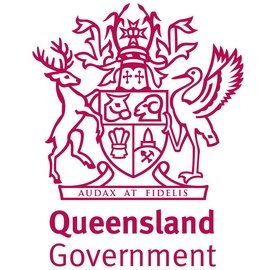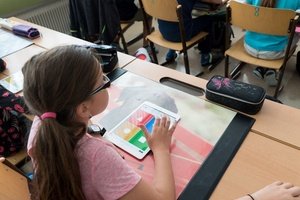Clipped and to-the-point, it’s just one of the ways in which the experienced teacher from Geelong Grammar School in Victoria uses consistent language to establish classroom routines that maximise learning, quash disruptions and create a calm and orderly space for all students to achieve.
For once Sherwin’s students cross the classroom threshold, they know it’s ‘business time’, he says.
A ‘do now’ activity will be set up on the board and ready to go, for starters.
“That ticks two boxes,” Sherwin explains.
“It gets them doing some retrieval from their memory, but it also gets them straight down to work. So, that’s the routine.
“You’ve got to have a strong start – the students have got to know when they walk in the room that their voices go off, and [they understand] we’re here to work and they can see that the question has been prepared. So, it not just all ad hoc.”
Sherwin follows the explicit teaching model of “I do, we do, you do” religiously throughout his classes.
He says this successfully builds students’ mastery of new maths concepts by providing scaffolded opportunities for practice before independent learning takes place.
It’s common and repeated commands, however, that automate the flow of Sherwin’s instruction and let students know what’s expected of them at every phase.
“If I say, ‘turn and talk’, they know they turn to their partner, and they talk about what I just asked, and they have 15 seconds for that,” he says.
“If I say, ‘silent teacher’ that means I’m modelling a question, if I say ‘hover and hold’ they know I’m asking them to hold their mini whiteboards and wait for them to reveal their answers.
“So, there’s a language that goes with those routines so [students] connect those key words with an action,” he explains.
It takes about two weeks for these kinds of cues to bed down to the point of automaticity, Sherwin says.
And it’s at this point that things are simplified immensely, he adds.
“The point is, whatever is being done, the students know what the behavioural expectations are around their responses.
“So, we have a class that is predictable, and students feel safe because they know what they’re supposed to do at every step – there’s no cognitive load trying to work out how it is that they’re supposed to behave…
“Every ounce of cognitive load goes towards addressing the problems and the task that have been set for them.”

It takes about two weeks for instructional cues to become automatic in the classroom, Geelong Grammar teacher Peter Sherwin says.
Before latching onto the enormous research base behind the science of learning some ten years ago, Sherwin used to believe that surprise and spontaneity were key to a great lesson with engaged kids.
And while there is a place to go off-script at times, he says, the real power is found in predictable, yet fast-paced, instruction that leaves little room for misunderstanding or off-task behaviour.
During the ‘I do’ phase, Sherwin models a question as student observe silently.
“The kids know that whilst this example is going up on the board, and there’s some modelling taking place from the teacher, that in my class, it’s pens down.
“The class will silent, and we’re really just focusing in with fine focus on every step of this example.”
Next the ‘we do’ kicks in, featuring mini-whiteboard checks for understanding and perhaps some cold calling for good measure, Sherwin says.
“I will then invite some questions, there’ll be a bit of exchange there, then they get to do some mini whiteboard work.
“Those questions will get gradually more difficult … and I’ll be reviewing (their responses) and adapting my next question to what I’ve seen.
“Do I need to explain go back and explain any of those steps? Do I need to break it down a little bit finer, based on what I’ve seen about the understanding of the class?”
While some teachers might feel reluctant to use cold calling out of fear it might make some students feel uncomfortable and ‘put on the spot’, research out of the US has found it can actually increase their confidence in participating.
“Research findings show that cold calling can be done fairly extensively without making students uncomfortable,” the researchers concluded.
As Kate Jones from Evidence Informed Education outlines, there are several reasons why relying on ‘hands up’ for classroom questioning is not always effective:
- It tends to be the same students answering questions every lesson as they are confident, articulate, and enthusiastic.
- Other students can avoid engaging with questions and rely on their peers to answer on their behalf.
- Hands up is not an inclusive approach, as not everyone has to participate or answer questions.
- This approach is misleading for teachers’ assessment of students’ learning. A small sample of students isn’t reflective of the whole class and their knowledge and understanding.
Jones offers five practical tips for effective cold calling here.
The latest PISA report found a significant proportion of Australian students learn maths in a disciplinary climate that hinders learning.
Assessing the learning environment in maths lessons across the OECD, the study found one quarter of students say they cannot work well in most, or all, classes.
Some 33 per cent do not listen to teacher instruction, while almost a third said the teacher had to wait a long time for students to settle, with 20.3 per cent reporting this occurred in most classes.
For Sherwin, there’s no doubt that the “staple diet” of any classroom “needs to be that predictability”.
“It’s tough enough being a student, I think [we just need to] give them a break by giving them certain structures and routines and then holding them to them,” he says.
Learn about how Sherwin sets his classroom up for success from day one of the new school year here.















